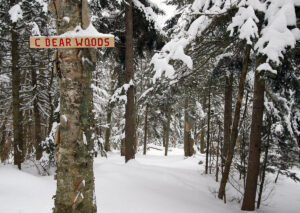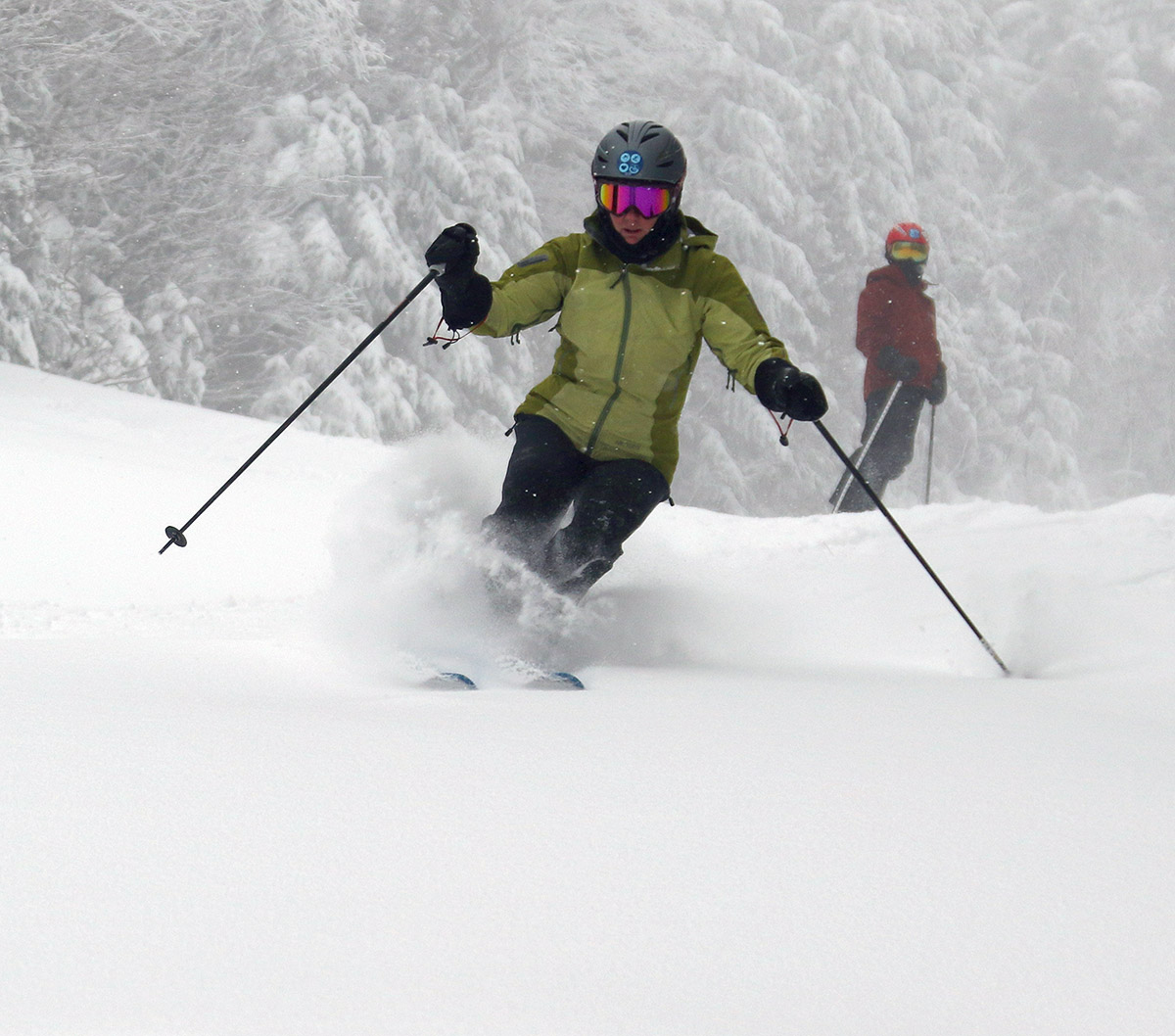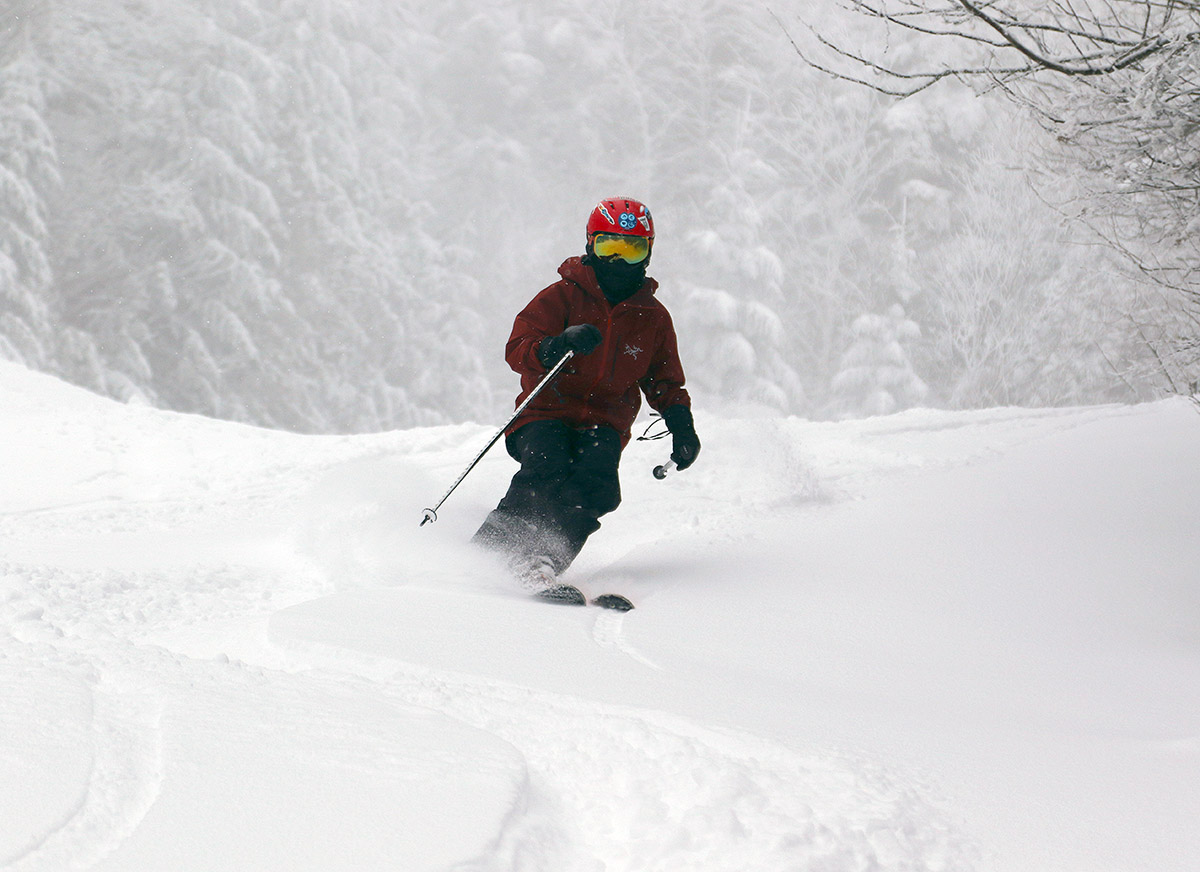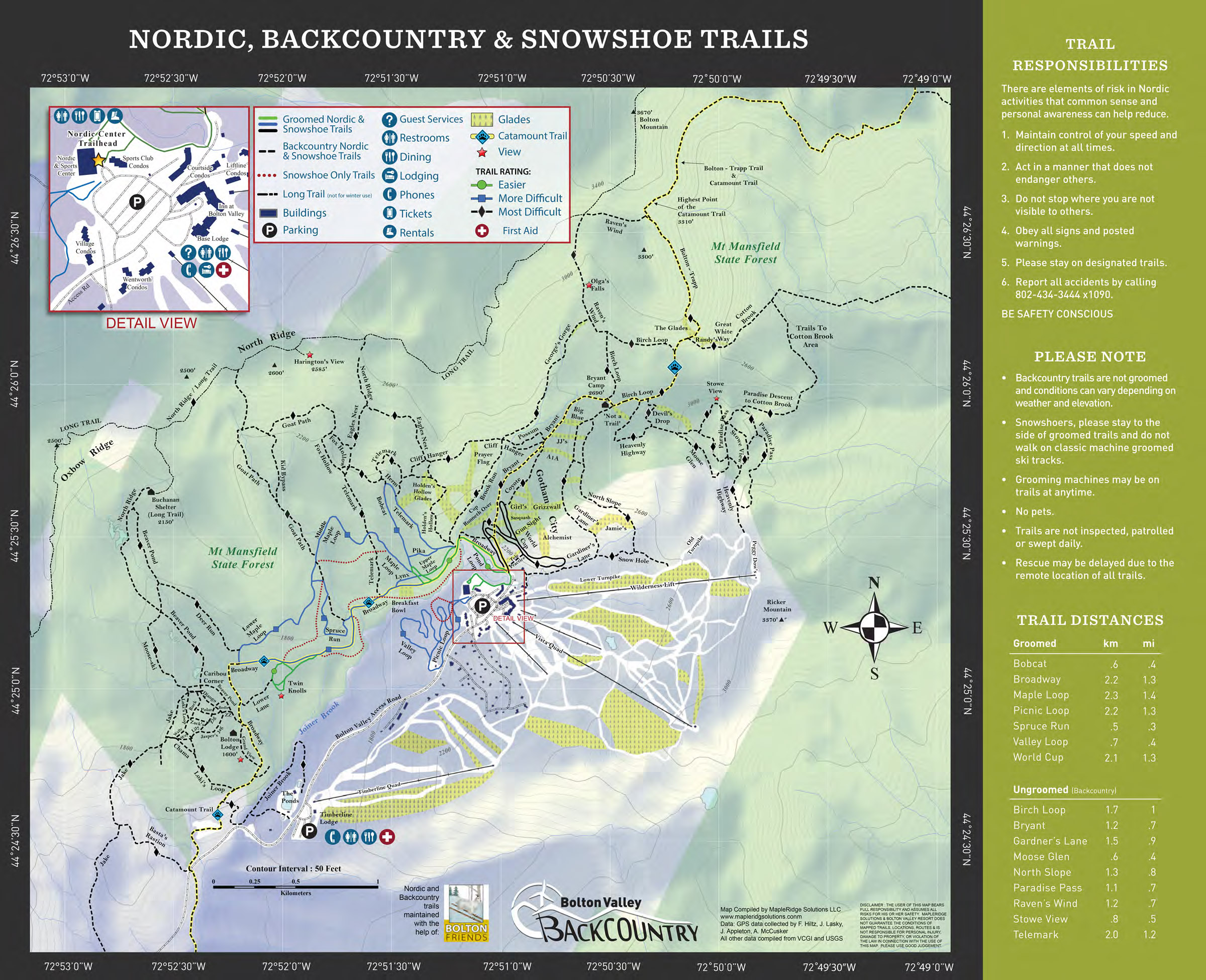
Over the past couple of days, we’ve had Winter Storm Kade affecting the area, and it’s been our largest storm cycle of the winter so far. It began on Thursday with some dense snow and mixed precipitation, then on Friday came heavy snowfall that was enough to even cause UVM to close down for the afternoon. By the time the storm wound down overnight, we’d picked up 17 inches of snow here at the house, and the local resorts in the Northern Greens were reporting up to 2 ½ feet of snow. The storm has been an excellent addition to the snowpack, with 1.86 inches of liquid equivalent here at home, and that must have meant more than 2 inches of liquid equivalent in the mountains. That’s an all-around solid resurfacing of the local slopes.

Cold temperatures in the single digits F were in the forecast today on the back side of the storm, but Dylan and I decided to head up for a few runs anyway – the bounty of new snow was just too good to miss. Our timing was pretty good such that we took our first run off the Vista Quad and headed right down to Timberline to catch the opening of the Timberline Quad. The top of Vista was absolutely frigid, with an air temperature below zero, but as we made our way down toward the Timberline Base we found that the temperature went up significantly.
“We generally found about 18 inches of powder, and at one point Dylan probed the total depth of snowpack down near the Timberline Base at ~1,500’ and found close to 30 inches of snow.”
At Timberline, the sun was out, the snow was great, and there was essentially no line at the Timberline Quad, so we simply stayed down there and skied until we were ready to go. We generally found about 18 inches of powder, and at one point Dylan probed the total depth of snowpack down near the Timberline Base at ~1,500’ and found close to 30 inches of snow. So, the snowpack is ready for prime time from the top to bottom elevations of the resort.
We probably would have stayed for a few more runs if the temperatures were warmer, but eventually we wanted to warm up and get some food, so we headed back to the main base and had some slices at Fireside Flatbread before heading out. The Mt. Mansfield Stake has finally caught up to average with this storm, and it looks like we could have some additional snow in the coming week.



















































































